Studies show that marijuana is being produced today is over 10 percent more potent than it was 30 years ago, and some producers have created the strongest strains ever recorded.
A lab at the University of Mississippi that tracks potency in marijuana seized by federal law enforcers reported finding strains with 37 percent potency. In 1972, the average potency was less than one percent. Dr. Mahmoud ElSohly, director of the Ole Miss studies, says the danger is not the marijuana itself, but that young users don’t know what they’re smoking is so potent.
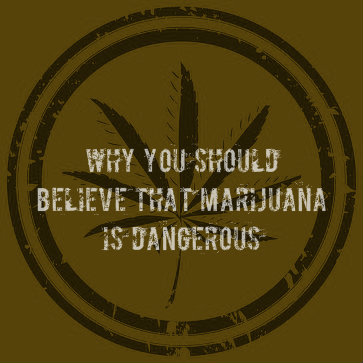 Dangerous Side Effects Of Marijuana
Dangerous Side Effects Of Marijuana
The National Institute on Drug Abuse (NIDA) says that high levels of THC, the ingredient in marijuana that causes psychoactive effects, could lead to a drop in IQ for those who smoke at a young age.
It is the altered state of mind which causes disorientation, anxiousness and poor decision making that’s the most dangerous side effect of smoking marijuana. When people smoke highly potent strains they may not be prepared for the side effects and consequences.
It’s not the age at which young adults start using, it’s the perception that marijuana isn’t dangerous.
Many Teens Are Smoking Marijuana And Are Not Properly Educated Of The Harm
According to the NIDA survey “Monitoring the Future,” over one-third of seniors admitted to smoking marijuana in the preceding 12 months. The number of middle school-aged children who admit to marijuana use has tripled from 1993. More astonishingly, 60 percent of high school seniors report not seeing regular marijuana use as harmful.
On top of being uneducated about the harmful consequences of smoking marijuana, users are also putting unknown chemicals into their bodies. Marijuana producers are always creating different strains and mixing the drug with other ingredients, causing unknown side effects. So there is no way for people who don’t know what they are smoking to anticipate the strong effects the drug will have on them. This takes even more control away from users and creates dangerous situations, like increased changes of intoxicated driving.
Read More: Is Marijuana Really Addictive?
30 Dec 2013
The History And Nasty Effects Of Krokodil
Would you swallow paint thinner or iodine? Would you inject yourself with lighter fluid or gasoline? Of course not. But desperate addicts living in impoverished areas of the world have turned to a drug that is made up of these kinds of toxic ingredients. The drug is known as Krokodil and it is a deadly substance.
The History Of Krokodil
Krokodil first appeared in the early 20th Century when it held a Swiss patent and was sold under the name Permonid. It is a derivative of morphine, but is 8-10 times stronger than morphine. Because of this, the drug also has a long history of non-medical use.
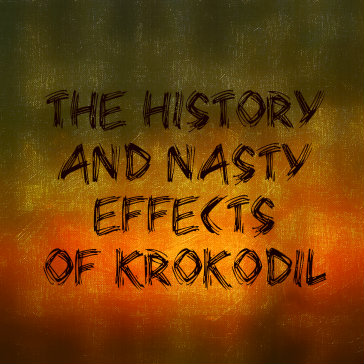 More recently, the drug resurfaced in poor areas of Russia around 2002 where it was seen as a cheap substitute for heroin. Krokodil is a concoction of codeine and any number of harsh chemicals which might be found around the house or in the garage. It has been cheap to make because until not long ago codeine was sold over-the-counter in Russia.
More recently, the drug resurfaced in poor areas of Russia around 2002 where it was seen as a cheap substitute for heroin. Krokodil is a concoction of codeine and any number of harsh chemicals which might be found around the house or in the garage. It has been cheap to make because until not long ago codeine was sold over-the-counter in Russia.
From 2002-2010 use of Krokodil spread across Russia, dragging what is guessed to be several million addicts in its wake. Exact figures on the numbers of users are hard to come by since the drug is essentially a form of suicide. Many users die within two years of starting to inject Krokodil. Why would people take such a scary drug? Because it is three times cheaper than heroin and 10 times stronger than codeine.
Krokodil did not remain in Russia. It is believed to have spread across Europe, taking hold in poor, mostly rural regions. It is now thought that Krokodil has crossed the ocean to Central or perhaps North America. There was a highly publicized report of a young girl who showed up in a hospital in Mexico City with what doctors thought to be a severe STD. Instead, it turned out that the girl had been injecting Krokodil into her genital area for a period of months.
Nasty Effects Of Krokodil On The Body
Krokodil is gruesome in that the drug destroys the user’s body from within. The drug causes blood vessels to break open and nearby tissue to die. Like the corrosive agents used to make the drug, lesions eat away a person’s flesh right down to the bone. It is called Krokodil because at the site where the person injects themselves with the drug the skin takes on a toughened, scale-like appearance. It gets a foothold among groups where heroin is too expensive. In the U.S. evidence shows a similar trend with many turning away from expensive prescription drugs in favor of far less costly street heroin.
Krokodil In The U.S.?
There have been unsubstantiated reports of Krokodil’s presence here in the United States, but so far no reports have been verified. Bringing a sample into a reputable lab is all that would be needed to determine that the drug has indeed come to America. Experts suggest that there is really no reason for Krokodil to find a home in this country.
Drug enforcement agents, addiction specialists and others say that the fact that Americans can afford less immediately lethal street drugs is reason enough to forego Krokodil. Though Krokodil, like methamphetamine, is a drug made as a home-brew, it is still hard to find, so why would drug users go looking for it? Lastly, Krokodil’s high is dependent on codeine – a substance that is far more controlled in this country than in other parts of the world.
So while the drug has definitely been traveling around the globe in recent years, it does not appear to have landed here as of yet. Still, the hopelessness that would drive a person to use such a frighteningly destructive drug is enough to warrant concern here at home and around the world.
Read More About Reported Cases Of Krokodil Use In The U.S.
A new report shows a rise in U.K. hospital emergency room visits by adults in their forties for drug or alcohol issues. The country’s health providers are determined to continue tackling the issue of drug and alcohol abuse as they strive to lower the rate of substance abuse.
The report came from data firm Dr Foster Intelligence. The group used ER admissions records as the basis for who is most often abusing drugs and alcohol and how often that abuse reaches the level of required hospitalization. According to their 2013 Hospital Guide:
Hospitalizations For Drug And Alcohol Abuse
 19 percent of ER admissions of 40-44 year olds were directly related to alcohol or drug use. That figure was highest among all age groups.
19 percent of ER admissions of 40-44 year olds were directly related to alcohol or drug use. That figure was highest among all age groups.- 18 percent of 45-49 year old admissions were for the same alcohol or drug reasons.
- In 2002-2003 the average age for a binge-drinking related hospitalization was 16 years. By 2004-2005 the typical age was 19. In 2012-13 the average age of those entering the hospital for binge drinking was 32 years.
- Despite the rise in average age for binge drinking ER visits, adolescents and young adults remain the most apt to need hospital care for binging.
Based on the Dr Foster report, young people are revealing more wisdom than their parents. Part of the problem is that an alarming number of patients don’t seem to be finding their way to recovery:
- The typical age of a person needing hospitalization for drugs or alcohol reasons in 2002-2003 was 41 years. In 2012-2013 the typical age was 43.
- Dr Foster found that over 500,000 individuals needed hospitalization for their alcohol or drug abuse at least one time during the past three years.
- At least 120,000 of those admitted to the hospital were 40-something years old. That is double the number of folks in their 20s or 60s who needed hospital care for drugs or alcohol.
Repeat ER Visits For Drugs Or Alcohol
Looking at all hospital admittances for alcohol or drugs in 2012-2013 a surprising 36 percent had already been admitted more than one time for the same problem in the past. And five percent had been in the hospital for drug or alcohol issues five times or more.
The problem appears to be most acute among the poor in Britain, with 36 percent of ER visits coming from the poorest regions of the country, and only nine percent of them coming from wealthy sections of the population.
A Dr Foster spokesman said that their figures were likely on the low end of actual numbers. The group only used hospital admittances where alcohol or drugs were 100 percent responsible. Left out were the high number of other admissions where substances played a key role.
Turning The Substance Abuse Hospital Visit Problem Around
Healthcare workers and National Health Services spokespeople say that there are ways to turn the problem around. For example, in 22 percent of the hospitalizations no general practitioner was listed on the health form. This could indicate that people are attempting to hide their problem from their primary care doctor rather than use them as a resource. If primary care doctors would use the NHS Healthcheck guide as a screening tool for substance abuse, more cases might be able to be treated before they reached a critical stage.
Hospitals also intend to implement more direct interventions by health professionals. Placing nurses who function as alcohol liaisons in the ER is one way to accomplish that goal.
Read More About Increased ER Visits For Surprising Drugs
If someone you care about is beginning to find recovery in a 12-Step Program, you may find yourself with a lot of questions. Media images of 12-Step Programs are a caricature, and from the outside, we have to admit the practices look a little strange. Is this some sort of cult? Yes, you’re happy the addict is sober and getting help, but is this how it has to be?
What Are The 12 Steps All About?
The 12-Step Program was a program of recovery developed by alcoholics for alcoholics and other addicts. The program is based upon 12 steps that help the addict to come to grips with his or her condition and establish the kind of spiritual life that will be the basis of a solid recovery and sobriety. The program recognizes addiction as a disease—an allergy of the body and an obsession of the mind. The Alcoholics Anonymous (AA) premise is based on the understanding that if someone is addicted to a particular substance or behavior, he or she will never again be able to consume that substance or engage in that behavior in a normal or healthy way. Total abstinence is the only solution.
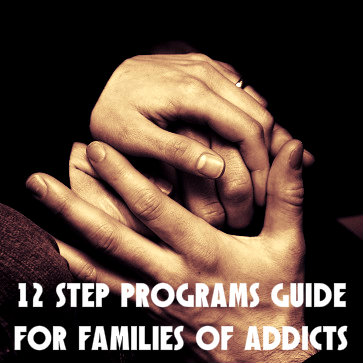 In most groups, members attend meetings regularly, read and study program literature, call and meet with other addicts or members in recovery and work regularly with a sponsor. Service to other addicts is of highest importance and seen as one of the keys to maintaining lasting sobriety.
In most groups, members attend meetings regularly, read and study program literature, call and meet with other addicts or members in recovery and work regularly with a sponsor. Service to other addicts is of highest importance and seen as one of the keys to maintaining lasting sobriety.
Aren’t 12 Step Programs A Little Overzealous?
It would appear that way to the outsider but, quite frankly, addiction is a little overzealous. For the non-addict it may be hard to fathom the prison and the punishment of being under the lash of a life-controlling addiction. As addicts, we have been so dominated by this cruel taskmaster that when we finally hit bottom we become willing to do whatever promises to rescue us.
And that proves to be quite a lot, as we soon find out once we’re in recovery. We believe that a powerful disease requires a powerful solution. In recovery we have to work as hard as the disease was working against us. But after a few years of sobriety many addicts come to see the program as the “easier, softer way,” when compared to the tyranny of addiction. When families see the beneficial results of program membership in their addict loved one, they too often become 12 Step supporters.
What Are The Roles Of Addict’s Loved Ones?
This will, to some degree, depend upon your relationship to the addict. For some recovering addicts, recovery needs to be a personal and private journey. They may not feel comfortable bringing others into their process, at least not in the beginning when they are yet fragile and convalescing. Don’t be offended by this; it isn’t personal. Recovery requires a lot of emotional work and some of us find we can better focus in the company of our program fellows, and perhaps apart from friends and family. Giving the addict the space he or she needs to heal can help to later guarantee closer relationships all around. Patience is needed.
It is wise, however, for the family of an addict to attend Al-Anon to learn more about the disease and how to deal with it. A family member’s addiction leaves scars on everyone. In Al-Anon you will come to better understand addiction, recovery and the 12-Step approach in addition to getting the support you need in healing from the wounds of addiction.
Read More On How 12 Step Programs Are Greatly Benefiting Teens
25 Dec 2013
Stopping The Flow Of Dangerous Synthetic Drugs
The chemical make-up of synthetic drugs are in a continuous state of flux, means their effects aren’t predictable and correct emergency treatment can be difficult. Those in law enforcement are often handcuffed in terms of prosecution because these substances can be modified to slip through current drug laws. Now there’s a group that’s trying to tighten the net.
The National Alliance for Model State Drug Laws (NAMSDL) want to stop the proliferation of synthetic drugs, which are the second most commonly used illicit drug among young people, according to a 2012 Monitoring the Future survey. One out of every nine high school seniors reported having used synthetic drugs within the past year.
How And Why The Recipes Of Synthetic Drugs Keeps Changing
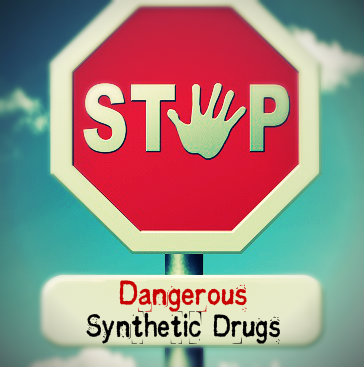 Synthetic drugs can be either man-made marijuana (cannabinoids) or chemicals related to amphetamines (cathinones). The synthetic marijuana, often sold under the names K2 or Spice, are plant materials resembling potpourri that are sprayed with chemicals that mimic THC, the psychoactive agent in marijuana. But the recipe keeps changing in order to evade prosecution.
Synthetic drugs can be either man-made marijuana (cannabinoids) or chemicals related to amphetamines (cathinones). The synthetic marijuana, often sold under the names K2 or Spice, are plant materials resembling potpourri that are sprayed with chemicals that mimic THC, the psychoactive agent in marijuana. But the recipe keeps changing in order to evade prosecution.
In 2012 the federal government made synthetic drugs, also known as novel psychoactive drugs, illegal. But the law defines the drugs narrowly. Once those who make the drugs tweak the recipe, the new compound no longer fits within the narrow definition of synthetic drugs. To further complicate the matter, the substances are often sold as bath salts, incense or plant food with a label saying they’re not intended for human consumption.
How The Spread Of Synthetic Drugs Is Trying To Be Halted
What NAMSDL wants to do is work with state lawmakers to make classes of substances illegal, rather than specific chemical combinations. The laws could give examples of what some of those substances might look like, but would leave room so that potential new chemical compounds would be illegal. That would certainly speed things up for law enforcement that now must often wait a year and a half before each new synthetic drug compound is banned.
NAMSDL also wants to enhance communication between those who see the changing drug landscape firsthand. The Drug Enforcement Agency currently collects and disseminates drug information to concerned parties, but it’s hospital emergency rooms, poison control centers and law enforcement that sees what’s going on in real time. This would help keep the information on synthetic substances truly up-to-date
Synthetic Drug Education And Prevention
NAMSDL is working directly with the Office of National Drug Control Policy and others to create an effective education and prevention campaign aimed at informing moms, dads, emergency room staff and school administrators about what these drugs are and what they do. Education, information flow and improved legislation represent a 360 degree effort on closing the gaps and halting the flow of these dangerous drugs.
Read More About Synthetic Drugs Causing More Emergency Room Visits Than Real Drugs
Inattention and impulsivity are two mental/behavioral patterns that can substantially lower a person’s ability to function well in a range of social and interpersonal situations. While these patterns are commonly linked to the presence of attention-deficit/hyperactivity disorder (ADHD), they also occur in people unaffected by ADHD. In a study published in November 2013 in the journal Drug and Alcohol Dependence, researchers from the University of Chicago looked at both inattention and impulsivity as potential risk factors for increasing individuals’ sensitivity to the effects of the stimulant amphetamine. Typically, such an increase in drug sensitivity significantly heightens the risks for subsequent stimulant abuse and stimulant addiction.
Inattention Characteristics
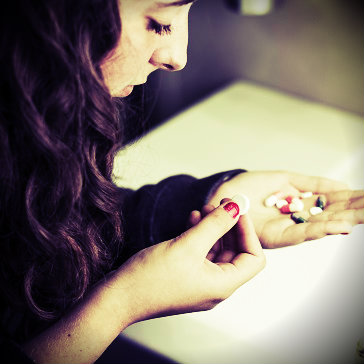 Inattention is the general term for an inability to stay focused on specific events taking place in your current surroundings, stay focused on specific details of your environment or stay focused during personal or group interactions with others. In the context of ADHD, these focusing problems contribute substantially to social and interpersonal dysfunction, characterized by such things as poor academic performance in school or college, difficulties making appropriate social adjustments to changing circumstances, underdevelopment of critical language and math skills, a reduced ability to get or keep a job, and difficulty maintaining personal or intimate relationships. Outside of the context of an ADHD diagnosis, inattention can increase a person’s risks for involvement in accidents or susceptibility to fraud or other deceitful behavior.
Inattention is the general term for an inability to stay focused on specific events taking place in your current surroundings, stay focused on specific details of your environment or stay focused during personal or group interactions with others. In the context of ADHD, these focusing problems contribute substantially to social and interpersonal dysfunction, characterized by such things as poor academic performance in school or college, difficulties making appropriate social adjustments to changing circumstances, underdevelopment of critical language and math skills, a reduced ability to get or keep a job, and difficulty maintaining personal or intimate relationships. Outside of the context of an ADHD diagnosis, inattention can increase a person’s risks for involvement in accidents or susceptibility to fraud or other deceitful behavior.
Impulsivity Characteristics
Impulsivity is a term used to describe a tendency to act without significant forethought, or to act while ignoring previously gained insights regarding the negative potential outcomes of one’s actions. In the context of ADHD, the tendency to act impulsively contributes to the same general forms of social and interpersonal dysfunction that appear in people affected by ADHD-related inattention. Outside of the context of ADHD, impulsivity is linked to increased risks for a group of mental health conditions called personality disorders, as well as increased risks for mania, a highly agitated or excitable state commonly associated with the presence of bipolar disorder.
Inattention, Impulsivity Problems And Susceptibility To Stimulants
In the study published in Drug and Alcohol Dependence, the University of Chicago researchers gave fairly low 20 mg, 10 mg and 5 mg doses of amphetamine to 165 adults with no history of substance abuse issues or other major health problems. After receiving each dose, each of these adults took part in tests designed to measure problems with inattention and problems with impulsivity. Each adult also filled out two questionnaires that helped the researchers gauge their sensitivity to the effects of amphetamine. For the sake of comparison, all 165 participants also went through the same testing procedures after taking a placebo drug dose that didn’t actually contain amphetamine or any other mind-altering substance.
The purpose of the project was to determine whether a high degree of impulsivity or inattention can increase a person’s susceptibility to the effects of amphetamine, and therefore make that person more susceptible to the eventual development of amphetamine abuse, amphetamine dependence or amphetamine addiction. The project’s designers undertook their efforts because, while previous studies had raised the possibility of a link between impulsivity, inattention and increased sensitivity to stimulant drugs, the authors of these studies had not examined this issue in detail.
At the end of the study, the researchers concluded that people affected by unusual degrees of inattention actually experience a decrease in their sensitivity to the mind-altering effects of amphetamine, not an increase. In addition, when amphetamine doses grow larger, people affected by inattention become less and less sensitive to the drug’s effects. The story is different for unusually impulsive people. When these individuals receive amphetamine, they exhibit a strong sensitivity to the drug’s effects. In addition, this sensitivity rises as the administered dose of amphetamine increases.
Results Of Strong Inattention, Impulsivity On Stimulant Abuse
The results of the study published in Drug and Alcohol Dependence indicate that the presence of unusually high levels of inattention may act as a hindrance to developing an abusive or addictive pattern of stimulant use. Conversely, the presence of unusually high levels of impulsivity may act as a factor in the development of these harmful patterns of stimulant intake. If this second point is true, then high impulsivity almost certainly adds to other known risks for developing stimulant abuse or addiction problems, rather than acting on its own as a primary factor.
Read More About Moms Abusing Stimulants
23 Dec 2013
Is Marijuana Really Addictive?
Many people take marijuana use with a grain of salt. It’s not a hard drug, right? It’s legal in two states now, so how bad could it be for you? If you have a loved one, maybe a teenager, who is smoking pot, you may wonder if he is at risk of becoming addicted. You should be worried, but not for the reasons you might think.
Marijuana Addiction
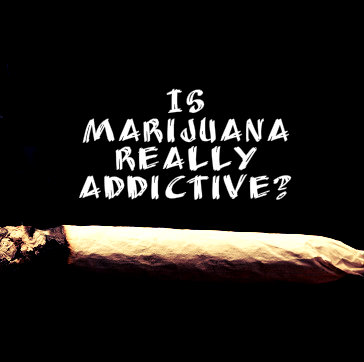 Most people who use marijuana do so recreationally and without developing an addiction. When compared to other drugs that are highly addictive, like heroin, meth or cocaine, marijuana seems very innocent. Those harder drugs can result in dependence in a user very quickly. What makes some drugs so addictive is that the body becomes physically dependent upon them. A heroin addict needs another hit just to feel normal again, to stop the pain, the anxiety, the irritability and the shaking that come with withdrawal.
Most people who use marijuana do so recreationally and without developing an addiction. When compared to other drugs that are highly addictive, like heroin, meth or cocaine, marijuana seems very innocent. Those harder drugs can result in dependence in a user very quickly. What makes some drugs so addictive is that the body becomes physically dependent upon them. A heroin addict needs another hit just to feel normal again, to stop the pain, the anxiety, the irritability and the shaking that come with withdrawal.
Marijuana does produce some light withdrawal symptoms. A regular user might start to feel a little irritable and experience an elevated heart rate when he has stopped using for a day or two. These symptoms are much milder than those seen with harder drugs, though. So is marijuana addictive? The answer is yes. Addiction is more complicated than physical dependence.
It is possible that your teen will become addicted to marijuana if he uses it regularly and frequently. If he begins to smoke pot in a way that is compulsive, if he can’t seem to stop, he needs it to relax, or he needs it to get going in the morning and to sleep at night, these are all signs of an addiction, whether he is physically dependent on the drug or not.
Marijuana Risks
Even if your teen does not become addicted and sticks to casual, recreational use of marijuana, there are still risks. When he smokes pot, it makes his heart rate go up, it makes him disoriented, it makes him uncoordinated and it may make him anxious or paranoid. Marijuana is a mind-altering substance. If he tries to do anything while high, such as drive a car, or even just cross a street, he could cause an accident.
Smoking pot also carries many of the same risks as smoking cigarettes. Substances in the smoke can cause cancer and lung disease, especially with regular use. Long-term marijuana use has been shown to cause abnormalities in the brain and the development of psychiatric problems. Another problem with smoking pot is that it tends to make people lazy and apathetic. This is not true for everyone, but someone who is high all of the time is not likely to get much done.
Parents Talking With Their Teens About Marijuana Use And Its Risks
So although marijuana can in fact be addictive, it is important to remember that it is not in the same class as harder drugs. There are different ways to become addicted to a substance or a behavior. Addiction to marijuana is often more of a behavioral habit than a physical dependence.
Aside from addiction, there are many other reasons to be concerned if your teen is smoking pot. Sit your teen down for a talk about the dangers and risks associated with using this drug. Explain the possibility of addiction and the physical damage it can do to his body. With information, you empower your teen to make the best choices.
Read More About How Marijuana Use Is Linked To Mental Disorders
Illegal street drugs and prescription drug misuse can be tracked via emergency room visits. But what about “legal highs,” such as inhalants like glue and paint?
MXE Abuse
A study by Swedish researchers provides insight into the use of Methoxetamine, or MXE. The drug is classed as a “research chemical” and can be purchased online. The study was published in the Journal of Psychoactive Drugs.
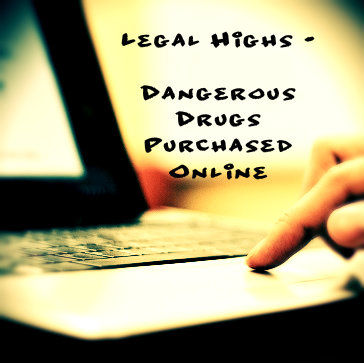 MXE is made from ketamine, a drug popularly used at clubs for its hallucinogenic and dissociative effects. Ketamine is also used for ketamine psychedelic psychotherapy, a tool used to treat depression and dependence disorders. MXE is similar in many ways to ketamine when used, but MXE tends to last longer and provide a more potent experience. The use of such substances can create a challenge for clinicians because they have little information about the contents of the drug, the interactions or side effects that are likely to occur with use.
MXE is made from ketamine, a drug popularly used at clubs for its hallucinogenic and dissociative effects. Ketamine is also used for ketamine psychedelic psychotherapy, a tool used to treat depression and dependence disorders. MXE is similar in many ways to ketamine when used, but MXE tends to last longer and provide a more potent experience. The use of such substances can create a challenge for clinicians because they have little information about the contents of the drug, the interactions or side effects that are likely to occur with use.
The researchers used online public forums to examine postings about the use of MXE. This type of study, called a phenomenological review, is useful in collecting information about experiences and perceptions. The researchers were able to gather data from anonymous posters on the sites.
MXE Effects
MXE users described dissociative properties similar to those associated with ketamine and altered states of consciousness. MXE was also reported as creating an elevated mood, an experience of euphoria, as well as long-lasting antidepressant effects, interests in new activities and personal growth.
The study’s design carries with it significant limitations. The use of anonymous reports to create a picture of the drug’s effects and risks is not the ideal way to measure the properties of a drug. However, the study provides important insight that could lead to more in-depth research. Next steps would include more systematic methods of research, including reliable measurements of effects, side effects and predictors for use.
Social Media’s Role In Mental Health Research And Drug Abuse Awareness
Social media is growing as a resource for mental health research. The use of public forums on drug use, combined with postings on other Internet sources, may not provide the same robust information as other types of study designs, but they may result in findings that provide a candid and unedited picture of users’ experiences.
The research may be helpful in raising awareness about the dangers of using chemicals to achieve a high similar to street drugs. Because they are legal and for sale on the Internet, users may misunderstand the level of danger attached to the use of these drugs. In addition to using the Internet to gather information about the use of MXE, social media may also be useful and play a role in raising awareness about the negative consequences of MXE use.


